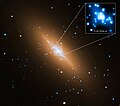|
تضامنًا مع حق الشعب الفلسطيني |
ملف:NGC 3115.jpg
اذهب إلى التنقل
اذهب إلى البحث
NGC_3115.jpg (665 × 590 بكسل حجم الملف: 32 كيلوبايت، نوع MIME: image/jpeg)
تاريخ الملف
اضغط على زمن/تاريخ لرؤية الملف كما بدا في هذا الزمن.
| زمن/تاريخ | صورة مصغرة | الأبعاد | مستخدم | تعليق | |
|---|---|---|---|---|---|
| حالي | 15:07، 4 أغسطس 2011 |  | 665 × 590 (32 كيلوبايت) | commonswiki>Mohamed Osama AlNagdy~commonswiki | {{Information |Description ={{en|1=NGC 3115 Galaxy}} |Source =NASA |Author =NASA |Date = |Permission = |other_versions = }} |
استخدام الملف
ال1 ملف التالي مكررات لهذا الملف (المزيد من التفاصيل):
- ملف:NGC 3115.jpg من ويكيميديا كومنز
الصفحة التالية تستخدم هذا الملف:


